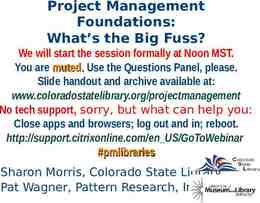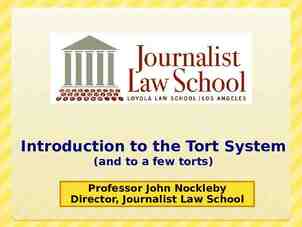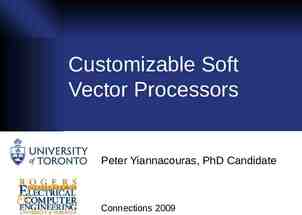Basic SCBA Self-Contained Breathing Apparatus Alabama Fire College
51 Slides1.84 MB
Basic SCBA Self-Contained Breathing Apparatus Alabama Fire College
Introduction Failure to use the SCBA properly can result in injury or death Respiratory system extremely vulnerable Fire departments must have a mask rule Wear and use SCBA in IDLH atmosphere SCBA necessary even during exterior defensive operations 7.2 Alabama Fire College
Introduction (cont’d.) Any inhaled toxic gas can directly cause disease of the lung tissue One in 12 firefighters is injured in the line of duty each year Smoke inhalation accounts for 18 percent of fatalities – 21 percent of fireground injuries 7.3 Alabama Fire College
Conditions Requiring Respiratory Protection Oxygen deficiency High temperatures Smoke or by-products of combustion Toxic environments 7.4 Alabama Fire College
Oxygen-Deficient Environments Fire consumes oxygen – Produces toxic gases – Displace or dilute oxygen Oxygen concentrations below 19.5 percent are oxygen-deficient atmospheres Affects on the human body: – Muscular impairment – Mental confusion – Death Alabama Fire College 7.5
Table 7-1 Effects of Hypoxia (Reduced Oxygen) 7.6 Alabama Fire College
Elevated Temperatures Respiratory system sensitive to temperature Air temperatures as low as 165 F can cause death within 1 minute Inhaling gases causes: – Pulmonary edema – Asphyxiation – Long-term damage Temperatures in structure fire reach 1000 F – One unprotected breath will cause death or severe damage to respiratory system 7.7 Alabama Fire College
Smoke Unburned products of combustion, particles of carbon, tar, associated gases Large amounts of gases due to use of plastics Inhalation of small amounts may be fatal Four causes of damage by smoke: – – – – Asphyxiation Chemical irritation Chemical asphyxiation Any combination of these 7.8 Alabama Fire College
Effects of Toxic Gases and Toxic Environments Combustion produces toxic gases and irritants – Affect short- and long-term health When combustion products combine may form lethal toxins Some common gases affect circulatory system Commercial occupancies may produce additional toxins – Requires higher level of protection 7.9 Alabama Fire College
Table 7-2 Toxic Gases Formed as Products of Combustion 7.10 Alabama Fire College
Legal Requirements for Self-Contained Breathing Apparatus Use Common sense: Use SCBA on every fire scene – Start to finish Regulations developed for SCBA use Organizations established regulations and standards 7.11 Alabama Fire College
Title 29 Code of Federal Regulations, Section 1910.134 Establishes standards for all entries into IDLH atmospheres April 1998 revision contains requirements related to interior structural firefighting – Defines interior structural firefighting as IDLH Requires the use of SCBA Requirements for complete respiratory protection program – Regular medical evaluation 7.12 Alabama Fire College
NFPA 1500: Standard on Fire Department Occupational Safety and Health Program Authority having jurisdiction (AHJ) must adopt the standard for the fire department Three additional standards: – NFPA 1404: minimum requirements for protection programs – NFPA 1981: design and performance criteria – NFPA 1982: standards on PASS 7.13 Alabama Fire College
Limitations of Self-Contained Breathing Apparatus Understand limitations to use unit effectively and safely Limitations of the SCBA unit itself – Size, weight, air supply Physiological limitations of the user 7.14 Alabama Fire College
Figure 7-7 Continuous training with SCBA is one of the keys to effective firefighting operations. 7.15 Alabama Fire College
SCBA Design and Size SCBA units add weight and bulk to PPE SCBA cylinder consumed more quickly than length of time rated for: – Limits advance into building – More frequent crew rotations Other concerns: – – – – Restricted visibility Added weight and bulk Firefighter’s voice muffled Limited air quantity 7.16 Alabama Fire College
Limitations of the SCBA User Physical, mental, emotional state cause usage problems – Physical limitations: added weight and bulk – Physiological limitations Lack of confidence in SCBA unit Physical stress and anxiety Emotional conditions 7.17 Alabama Fire College
Air Supply Management Air supply management – Must understand air consumption rates – Individual point of no return – Heads up display Various methods of breathing take experimentation on the part of the firefighter – Use normal breaths and exhale slowly – Never hold breath – Controlled breathing is most efficient use of air 7.18 Alabama Fire College
Figure 7-11 An example of an air consumption test. 7.19 Alabama Fire College
Types of Self-Contained Breathing Apparatus Two types of SCBA: – Open-circuit SCBA Exhaled air is vented to outside atmosphere Most common – Closed-circuit SCBA Exhaled air stays in the system for filtering, cleaning, circulation Sometimes used for specialized rescue incidents 7.20 Alabama Fire College
Open-Circuit Self-Contained Breathing Apparatus Designed and built in accordance with NIOSH and NFPA standards Four basic assembly components: – – – – Backpack and harness Cylinder Regulator Face piece assembly 7.21 Alabama Fire College
Figure 7-13 The four components of the open-circuit SCBA are the backpack/harness, cylinder, regulator, and face piece assemblies. 7.22 Alabama Fire College
Head Harness Head Straps Nose Cone Voice Emitter Head Straps Regulator Adapter Port 7.23 Alabama Fire College
Purge Valve (Emergency Bypass) Heads Up Display (HUD) Face Piece Lock Tab Mechanism Regulator Quick Disconnect with HUD Connector Air Saver Switch or the Don/Doff Switch 7.24 Alabama Fire College
Closed-Circuit Self-Contained Breathing Apparatus Not used for firefighting operations Most common use: hazardous materials incidents Air supplies range from 30 minutes to four hours Contain cylinder, filter system, regulator, and valves Clean and filter exhaled breath and add oxygen – Air supply duration based on filtering/cleaning and oxygen capacity of unit 7.25 Alabama Fire College
Open-Circuit Supplied Air Respirators Open-circuit supplied air respirators (SARs) – Also called airline respirators – Remote air supply Commonly used for hazardous materials incidents – Confined space rescues Long-duration of air supply, mobility, agility SCBA escape unit with 5 10 minutes 7.26 Alabama Fire College
Inspection and Maintenance of Self-Contained Breathing Apparatus Inspection on daily or regular basis Always follow manufacturer’s instructions Procedures in this chapter may differ from the recommendation 7.27 Alabama Fire College
Daily Maintenance SCBA units should be checked daily If used during emergency scene or training exercise should be serviced in same manner Follow 10-step inspection procedure 7.28 Alabama Fire College
Monthly Maintenance Monthly SCBA check contains all elements of the daily check – Adds several checks of mechanics of system Irregularities noted and repaired or pull SCBA from service 7.29 Alabama Fire College
Annual and Biannual Maintenance NIOSH and SCBA manufacturers require different functional tests of SCBA units Only manufacturer’s authorized or trained service personnel shall conduct these tests Firefighters should refer to the instructions for the SCBA units used 7.30 Alabama Fire College
General Considerations Operational safety checks must be performed Conducted on a daily or regular basis – Immediately prior to using the SCBA unit If any component does not operate properly or is damaged, unit taken out of service immediately 7.31 Alabama Fire College
Figure 7-23 Firefighters must perform regular checks of SCBA to ensure the unit’s ability to operate. 7.32 Alabama Fire College
Donning and Doffing SelfContained Breathing Apparatus Most common donning procedures: – Seat-mounted position in the apparatus – Side compartment on the apparatus – Storage case Refer to manufacturer’s instructions 7.33 Alabama Fire College
Storage Case Two methods to don unit: – “Over the head” – “Coat” – Choice is a matter of personal preference and training Refer to donning instructions for the particular SCBA unit 7.34 Alabama Fire College
Seat-Mounted Apparatus Allows for quick donning Unit readily available for regular inspection Three important safety requirements: – Storing of the face piece – Donning the unit while vehicle is moving – Checking the cylinder gauge Never don while vehicle is in motion Check gauge before response or use the buddy system 7.35 Alabama Fire College
Compartment or Side-Mounted Apparatus Similar to seat-mounted position except firefighter is standing If mount bracket wrong height, use “coat” method Follow donning methods for particular mounting style 7.36 Alabama Fire College
Donning the SCBA Face Piece Most SCBA face pieces donned in a similar manner – Difference in style of head straps, regulator location Essential to protect firefighter from toxic gases Firefighter must be fitted for the face piece to be used with a particular manufacturer’s SCBA Prohibit anything that may interfere with proper fit and seal of face piece – Examples: eye glasses, beards, sideburns 7.37 Alabama Fire College
Removing/Doffing the SCBA Unit Generally to remove SCBA donning procedure is reversed If awaiting another assignment, remove face piece – Allow normal breathing, conserve air Do not wear the mask without air flowing into it Regulator or face piece must not be contaminated After assignment complete, report to rehabilitation 7.38 Alabama Fire College
Self-Contained Breathing Apparatus Operation and Emergency Procedures Fire departments must establish respiratory protection programs Firefighters must be proficient in the safe use of SCBA – Donning and doffing procedures – Individual limitations – Limitations of SCBA unit 7.39 Alabama Fire College
Safe Use of SCBA Essential to firefighter survival SCBA unit and protective equipment add weight and bulk – Increased exertion and loss of body fluids Firefighters must be aware of symptoms of heat stress – Be aware of own limitations and abilities 7.40 Alabama Fire College
Operating in a Hostile Environment General rules: – Check in with accountability officer when entering or exiting – Remain low, check the environment and conditions – Never remove the face piece, maintain an awareness of location – Ventilate as you advance if it does not spread fire – Check for outside openings – Maintain direct contact with other team members – Never enter a hostile environment alone 7.41 Alabama Fire College
Restricted Openings Probe tight spot with a tool Be sure conditions on other side of obstacle are safe Shift pack to left side “Swim” through obstacle backwards “Forward dive” technique Do not remove SCBA unless absolutely necessary 7.42 Alabama Fire College
Figure 7-31 Firefighters may have to get beneath an obstacle to facilitate their escape, which may also require them to lower their profile. 7.43 Alabama Fire College
Emergency Procedures Emergency procedures exist to assist a firefighter in safe escape from hazard Remain calm, rely on training and knowledge Never remove the face piece of the SCBA Standard emergency check procedure stressed If entangled, do not pull forward – Use wire cutters to cut one wire at a time – “Swim” method 7.44 Alabama Fire College
Figure 7-32 Emergency procedures check. 7.45 Alabama Fire College
Changing SCBA Cylinders Cylinders changed after use, following local SOPs Cylinder 90 percent full could mean loss of 2 5 minutes of air supply – Could make the difference in successful exit Follow 12-step replacement procedure Additional steps for two-person SCBA cylinder replacement 7.46 Alabama Fire College
Servicing SCBA Cylinders Cylinder serviced when below full – Air source must be tested and certified – All cylinders must have a current hydrostatic test date – All fill stations must have fragmentation containment devices – All manufacturer’s recommendations should be followed – Fill rate may vary Cascade system Compressor/purifier system 7.47 Alabama Fire College
(B) (A) Figure 7-36 (A) A cascade system is one of the systems available to service SCBA cylinders. These may be fixed or mobile units. (B) 7.48 Alabama Fire College
Lessons Learned SCBA unit is to a firefighter as a weapon is to a soldier No substitute for proper SCBA training – Continued practice and advanced training necessary Prevent failures: thoroughly inspect and test SCBA function as often as possible Firefighters must be prepared to go in harm’s way – Be knowledgeable and proficient in use of SCBA 7.49 Alabama Fire College
Summary SCBA is one of the most important items of PPE that firefighters have available to them. An increase in safety regulations and improvements in design and construction of SCBA have greatly increased their safety and reliability. An SCBA has limitations and also increases the limitations and demands on the firefighter’s physical conditioning. 7.50 Alabama Fire College
Summary The firefighter must be familiar and comfortable with the use, emergency procedures, inspection, and maintenance of an SCBA. The firefighter must be proficient in the proper and rapid procedures for donning and doffing SCBA. 7.51 Alabama Fire College
























































